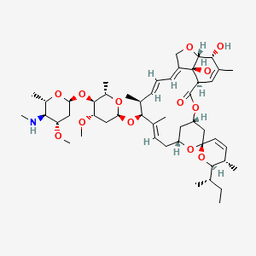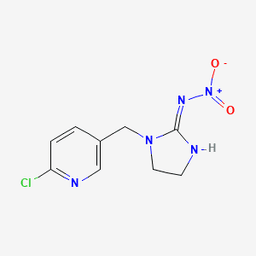

A post-emergence, systemic sulfonylurea (Metsulfuron-methyl) herbicide characterized by ultra-low application rates (4–8 g/ha). Metsulfuron acts by inhibiting the ALS (acetolactate synthase) enzyme in broadleaf weeds and sedges, disrupting amino acid synthesis and halting cell division. Despite its potency generally, metsulfuron-methyl exhibits low toxicity to non-target organisms and offers soil residual control with minimal drift risk. Preferred by grain growers to control broadleaf weeds such as Chenopodium album, Vicia spp., Ludwigia spp., and more in major grains, rice, and sugarcane. Its selective uptake through foliage and roots contributes to effective, long-lasting control without harming crops. This herbicide is also called as (ALLY, Allie, Granstar, Gropper) by the suppliers.

A post-emergence, systemic sulfonylurea (Metsulfuron-methyl) herbicide characterized by ultra-low application rates (4–8 g/ha). Metsulfuron acts by inhibiting the ALS (acetolactate synthase) enzyme in broadleaf weeds and sedges, disrupting amino acid synthesis and halting cell division. Despite its potency generally, metsulfuron-methyl exhibits low toxicity to non-target organisms and offers soil residual control with minimal drift risk. Preferred by grain growers to control broadleaf weeds such as Chenopodium album, Vicia spp., Ludwigia spp., and more in major grains, rice, and sugarcane. Its selective uptake through foliage and roots contributes to effective, long-lasting control without harming crops. This herbicide is also called as (ALLY, Allie, Granstar, Gropper) by the suppliers.

.3d8f8f41.svg)
Agrochemicals
.3556d45a.svg)

Crop Protection & Pest Control


Herbicides

Chemical Properties & Specifications
Category 9 (Environmental Hazard)
H302: Harmful if swallowed H373: May cause organ damage from prolonged exposure H400: Very toxic to aquatic life H410: Very toxic to aquatic life with long-lasting effects
Must carry aquatic toxicity and exposure precautions
WHO Class U (Unlikely to present acute hazard) / Most assessments are pointing low mammalian toxicity. Listed as HRAC group B (ALS inhibitors)
Effective in direct-seeded rice and sugarcane plantations where selective control of broadleaf species and sedges is critical.
Applied in pastures to manage perennial broadleaf weeds with residual effect, allowing better grass dominance and regrowth.
Used in wheat, barley, and oats to eliminate broadleaf weeds like Chenopodium, Vicia, and Melilotus, typically applied 25–30 days after sowing or after first irrigation.
Compatible with non-ionic surfactants & other herbicides, allowing integrated weed management with multi role effective chemical action.
*Ultra-Low Application Rate: Effective at just 4–8 grams of active ingredient per hectare *Systemic Action: Rapid absorption through foliage and translocation to meristematic tissues *Residual Activity: Prolonged weed suppression with minimal reapplication *Crop-Safe: High tolerance in cereals, rice, sugarcane, and grasses
Recognized for WP formulation under international herbicide standards. Others specifications exist for TC, WG, and WP. AI purity ≥960 g/kg and defined impurity limits.
Dry, <30 °C, well-sealed to maintain suspensibility
Available in sealed HDPE pouches (typically 8 g to 1 kg packs)
At least 24 months when stored per standard agrichem rules
Avoid moisture exposure to maintain flow and suspension stability

CAS No. : 155569-91-8
Category : Crop Protection & Pest Control
Sub-Category : Insecticides
Description: Emamectin Benzoate is a potent avermectin insecticide used primarily for lepidopteran pest control i...

CAS No. : 138261-41-3
Category : Crop Protection & Pest Control
Sub-Category : Insecticides
Description: Imidacloprid 30.5% SC or Confidor is a high-load suspension concentrate formulation insecticide desi...

CAS No. : 155569-91-8
Category : Crop Protection & Pest Control
Sub-Category : Insecticides
Description: Emamectin Benzoate is a semisynthetic derivative of avermectin B1, which is derived from the ferment...